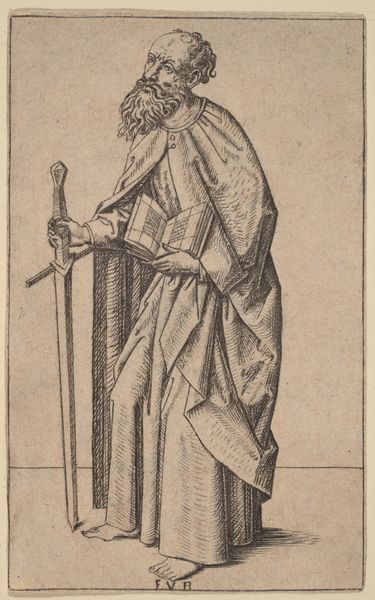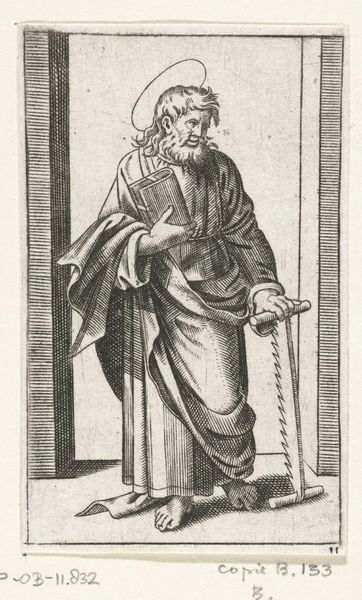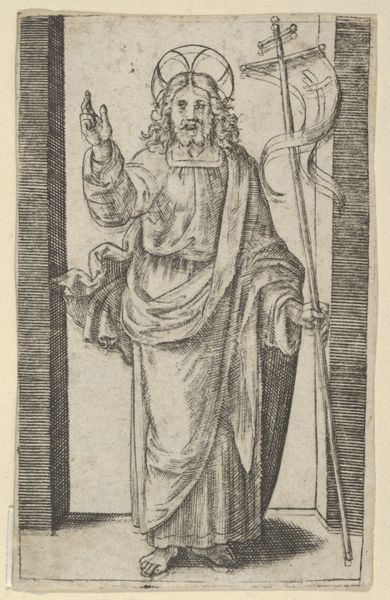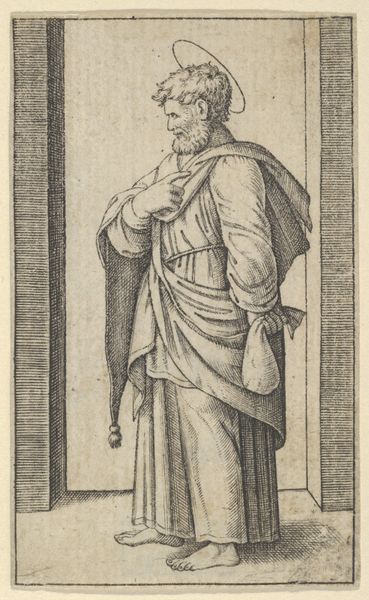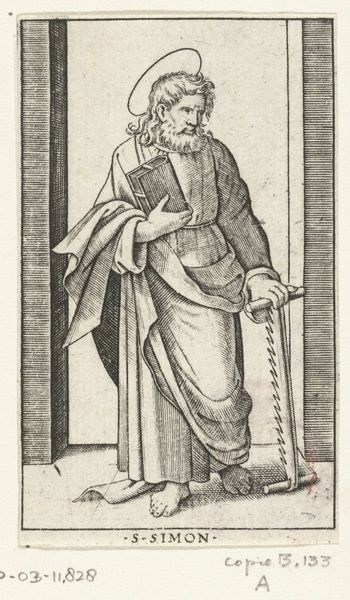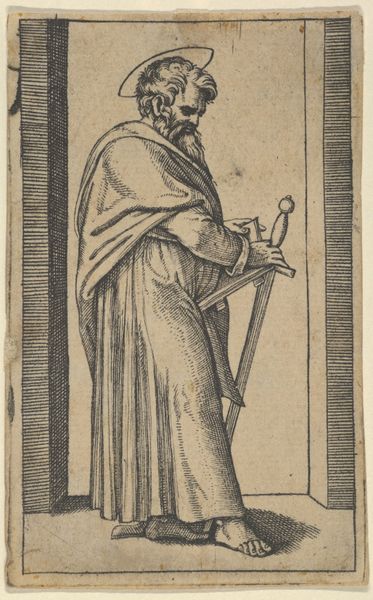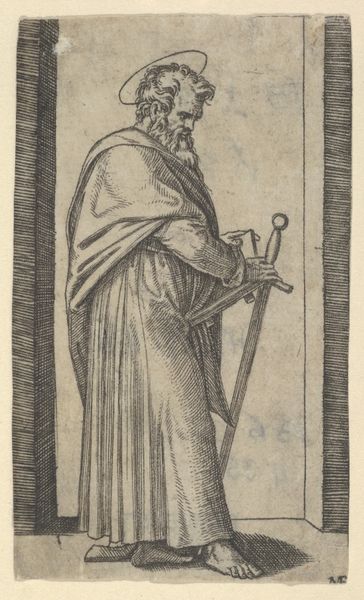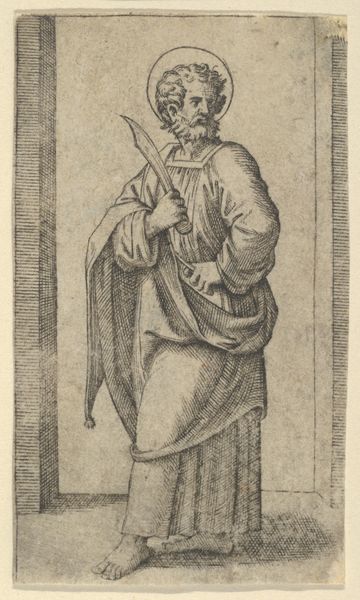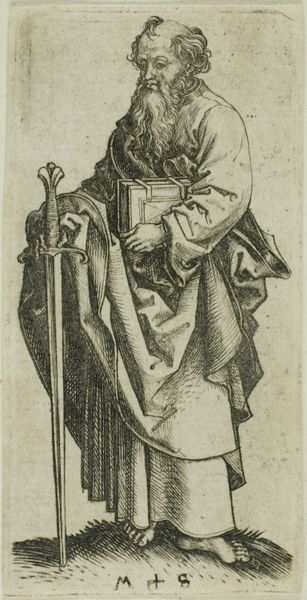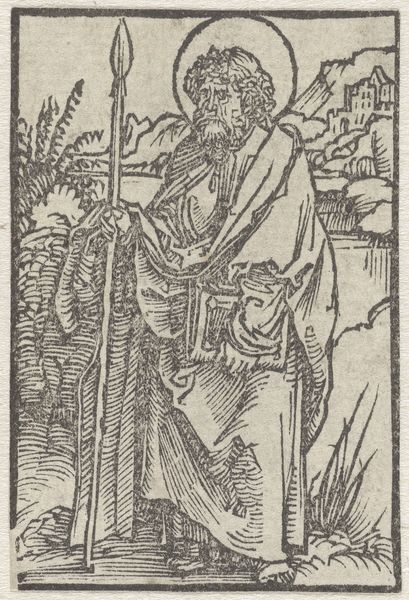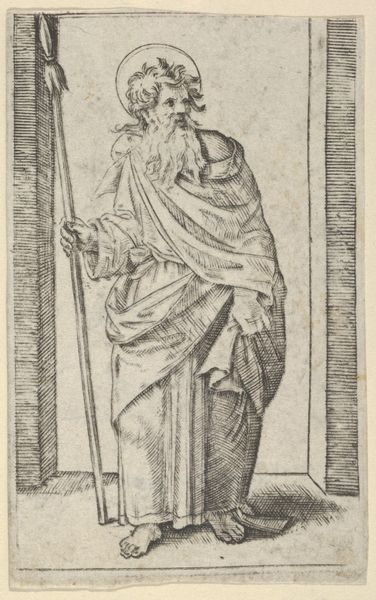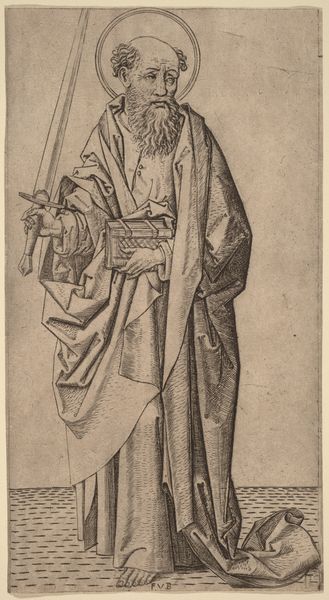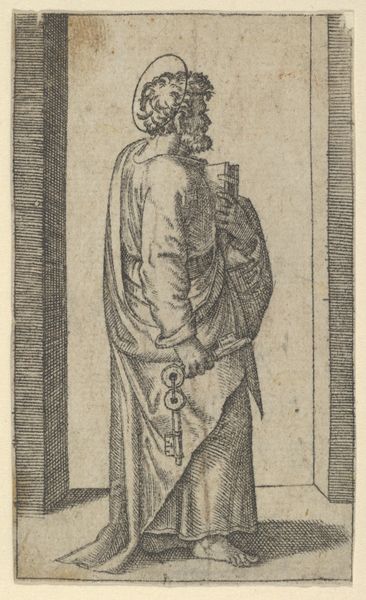
Saint Simon, a saw in his lowered left hand, from the series 'Piccoli Santi' (Small Saints) 1495 - 1505
0:00
0:00
drawing, print, engraving
#
portrait
#
drawing
# print
#
figuration
#
men
#
line
#
history-painting
#
italian-renaissance
#
engraving
Dimensions: 3 1/4 x 1 15/16 in. (8.2 x 5.0 cm)
Copyright: Public Domain
Curator: Let's turn our attention to this engraving from the late 15th, early 16th century, "Saint Simon, a saw in his lowered left hand, from the series 'Piccoli Santi'" created by Marcantonio Raimondi. It resides here at the Met. Editor: It strikes me as an odd combination of serenity and potential violence. The saint, haloed, with that gentle expression, holding a book… yet also carrying this very prominent saw. There's a tension there. Curator: That tension speaks volumes about the depiction of saints during the Renaissance. Raimondi is playing with expectations. We understand St. Simon was martyred –tradition says he was sawn in half. So the saw isn’t just a tool; it’s an attribute, a symbol of his fate, brought right into the foreground. It becomes part of his identity. Editor: Absolutely. And the line work emphasizes that duality. Look at the careful hatching that defines the folds of his robes – classical, almost elegant. But then that saw is rendered with this stark, almost crude clarity. It’s a brutal shape against the flowing lines of his garments. Curator: Exactly! Raimondi’s technique served his purpose perfectly. He uses the established visual language of religious art but inserts these disruptive, almost shocking, elements of the everyday realities, and the realities of the violence enacted at the time and remembered since then. It prompts the viewer to confront not just faith, but its consequences. Editor: The size contributes too, I think. These ‘Piccoli Santi,’ these “small saints,” feel immediate, more human perhaps. You can see every line etched into the plate, creating an intimate experience despite the weighty subject matter. It’s not some grand fresco; it's a personal encounter. Curator: Ultimately, Raimondi delivers a complex and potent reflection on faith, suffering, and how these were understood and communicated during this crucial period in art history. It asks us to consider the role of violence in shaping religious identity. Editor: It is intriguing to me how this work’s success hinges on that almost-oxymoronic pairing, that sharp visual juxtaposition that allows us to question the surface of the devotional and arrive at something… quite troubling.
Comments
No comments
Be the first to comment and join the conversation on the ultimate creative platform.
